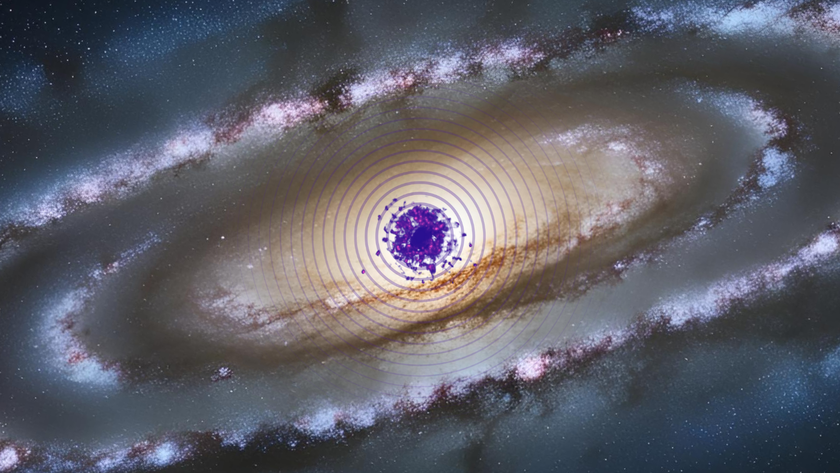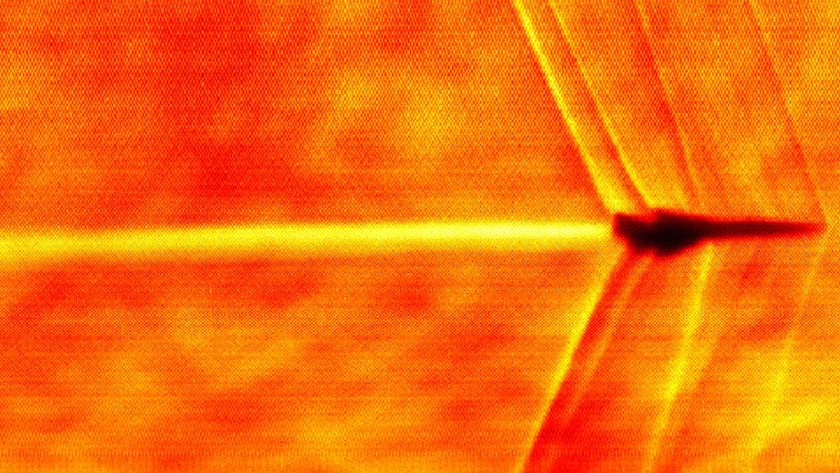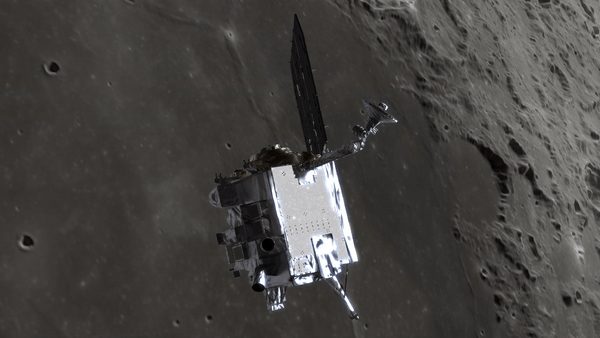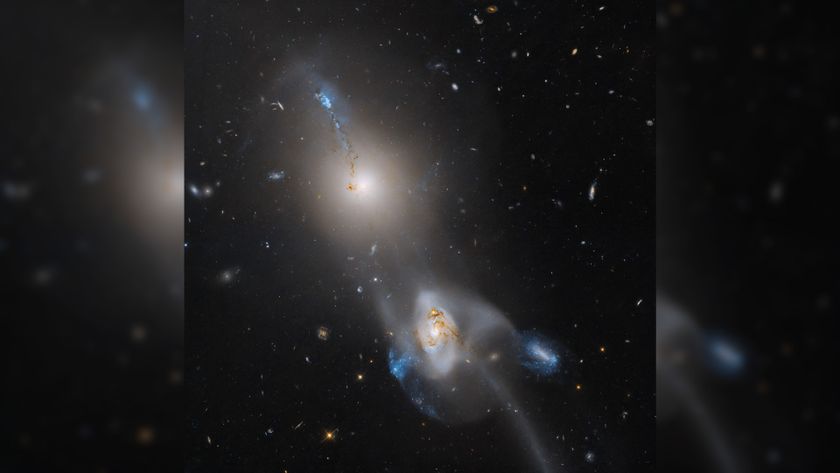A Weird Mud Plume May Have Built the Highest Peak on Dwarf Planet Ceres
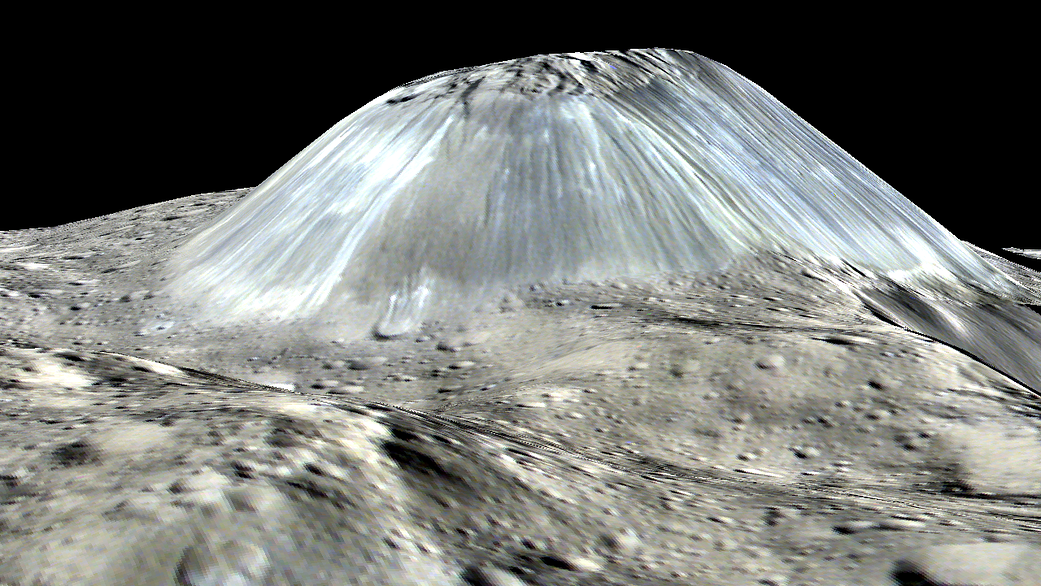
A plume of mud from the depths of dwarf planet Ceres may have created the miniature world's highest mountain, a new study reveals — marking the first time scientists have discovered such a plume in the solar system.
With a diameter of about 585 miles (940 kilometers), Ceres is both a dwarf planet and the largest member of the asteroid belt located between Mars and Jupiter. In 2015, NASA's Dawn spacecraft discovered a 2.5-mile-high (4 km) and 10.5-mile-wide (17 km) dome-shaped mountain on Ceres dubbed Ahuna Mons, which is by far the largest feature on the dwarf planet's surface.
Previous research suggested that Ahuna Mons was relatively young. Specifically, the low number of craters on the mountain suggested that it formed within the last 200 million years or so. (Like the rest of the solar system, Ceres itself formed about 4.56 billion years ago.)
Related: Photos: Dwarf Planet Ceres, the Solar System's Largest Asteroid
The shape of this dome and bright streaks of salt detected on its slopes suggested that it formed volcanically, most likely from salty fluid that erupted from the interior of Ceres. However, dwarf planets such as Ceres are expected to cool and solidify relatively quickly after their formation, and so "interior activity so late in the history of the body was not thought to be possible," study lead author Ottaviano Ruesch, a planetary geologist at the European Space and Technology Center at Noordwijk in the Netherlands, told Space.com.
To find out Ahuna Mons' origin, scientists analyzed Dawn's maps of Ceres' gravity field. The strength of the field depends on Ceres' mass, and since the dwarf planet's mass is not spread evenly, its gravitational pull is stronger in some places on the planet's surface and weaker in others. As such, gravity maps can reveal otherwise hidden details of how a world's mass is concentrated.
Previous analyses of Ceres' gravity field suggested that under a rocky crust about 24 miles thick (40 km), the dwarf planet possessed a mantle layer loaded with fluids. The new research found what appeared to be a plume of slurry from this mantle, a muddy mix of salty brine and solid particles.
Get the Space.com Newsletter
Breaking space news, the latest updates on rocket launches, skywatching events and more!
This mantle plume from Ceres is unlike any other seen to date, Ruesch noted. On Earth, mantle plumes are made of molten rock, and on icy moons such as Saturn's Enceladus, mantle plumes are watery. In contrast, Ceres may possess plumes of mud.
The researchers suggested that Ceres' mantle of mud may still experience convection — that is, churning. "The possibility of mantle convection and upwelling plumes in a mud-bearing mantle was, up to now, only suggested theoretically," Ruesch said. "We now have substantial evidence that upwelling plumes exist on dwarf planets made of rock and water ice."
The scientists detailed their findings online June 10 in the journal Nature Geoscience.
- Ceres: The Smallest and Closest Dwarf Planet
- Dwarf Planet Ceres Hosted Near-Surface Water for Millions of Years
- Giant Ice Volcanoes Once Covered Dwarf Planet Ceres
Follow Charles Q. Choi on Twitter @cqchoi. Follow us on Twitter @Spacedotcom and on Facebook.
Join our Space Forums to keep talking space on the latest missions, night sky and more! And if you have a news tip, correction or comment, let us know at: community@space.com.

Charles Q. Choi is a contributing writer for Space.com and Live Science. He covers all things human origins and astronomy as well as physics, animals and general science topics. Charles has a Master of Arts degree from the University of Missouri-Columbia, School of Journalism and a Bachelor of Arts degree from the University of South Florida. Charles has visited every continent on Earth, drinking rancid yak butter tea in Lhasa, snorkeling with sea lions in the Galapagos and even climbing an iceberg in Antarctica. Visit him at http://www.sciwriter.us

